Greetings from Hadrian’s Wall
By Sarah Hodgson
We came looking for ruins, but what we found was much more than a lonely stone barrier – it was a route alive with history, hikers, and the occasional stubborn cow.
Walking where Roman soldiers once patrolled the very edge of an empire, the views stretch for miles over moorland and stone, and you can almost hear the echoes of ancient footsteps. Hadrian’s Wall itself is a marvel, still standing strong after nearly 2,000 years.

We started our journey two weeks earlier in Wallsend – you’ll know from our previous walks that we like to complete the whole route and walk every mile.
The day began at Segedunum Roman Fort, a well-preserved archaeological site that marks the beginning of the Wall. Its name means “strong fort” in Latin, which feels fitting for the edge of the empire.
Over the next two days we covered the first 25 miles between Wallsend and Corbridge.
This section of the route might not appeal to everyone, as it’s the most urban and flat stretch of the walk. Still, there’s something quite special about starting your 86-mile journey literally at the “end of the Wall,” following the River Tyne, and watching the old industrial landscape slowly merge with ancient history and modern life.
Our first day ended in Heddon-on-the-Wall, where one of the best-preserved lengths of the Wall lies. It gives you a real sense of its original scale – once standing 15 feet high and 10 feet wide. More than just a defence, the Wall was also a statement of power and control.
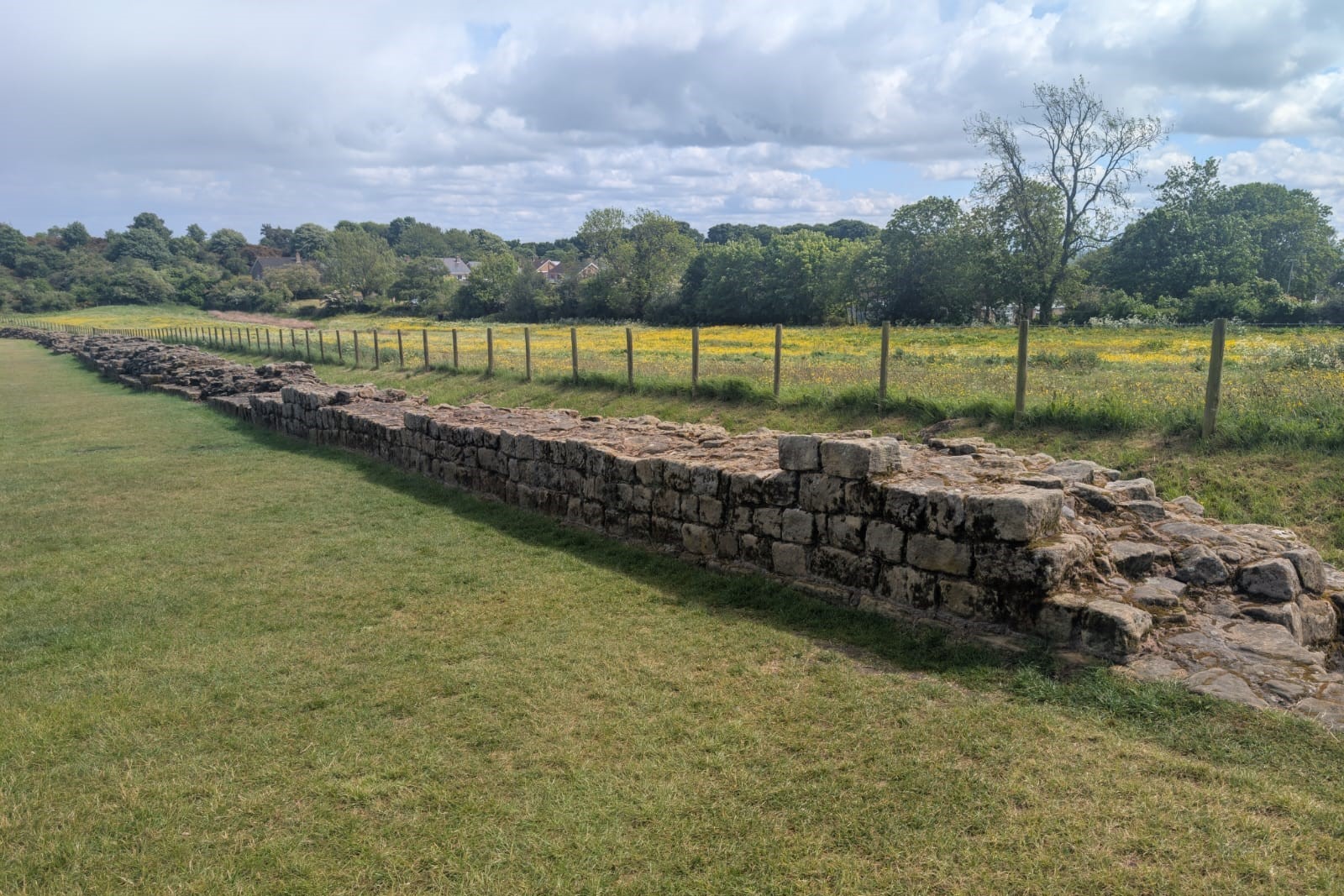
From Heddon on the Wall, the route runs along the old military road, so the Wall is mostly hidden beneath modern roads and fields, but the beautiful setting of rolling fields and superb English countryside certainly makes up for it. This is going to be a good route to walk we both agreed.
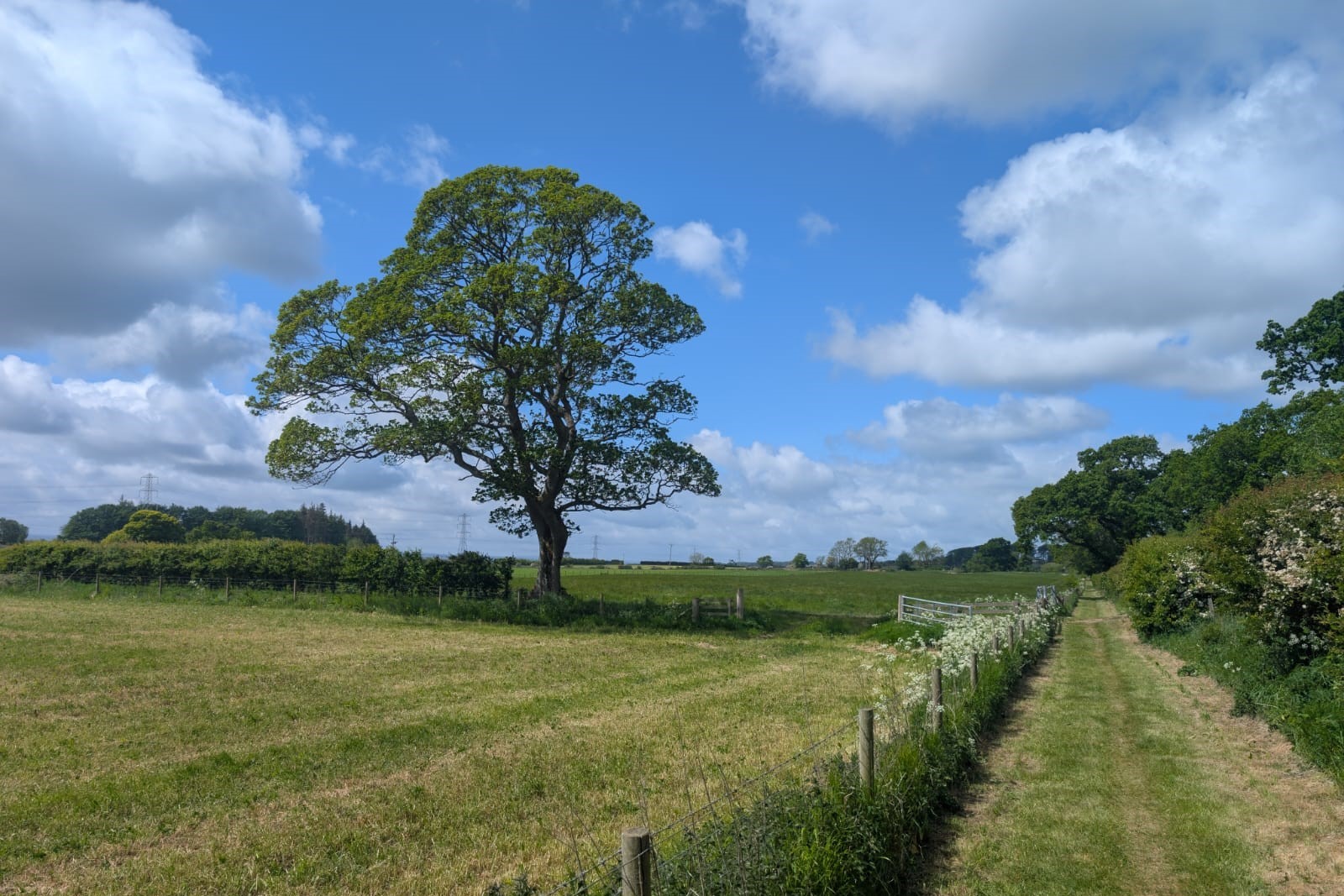
Our arrival at Port Gate marks the end of our 10-mile day. Port Gate also marks where one of the main military checkpoints and a gateway to the untamed north, which we now know as Scotland, was located. Little remains now, but with a little imagination, you can picture the complex structure, including a guard post and watchtower, that once stood here.
At this point, it is worth mentioning the English/Scottish border – don’t be fooled into thinking that the wall marks the border; it doesn’t, as Northumberland lies mainly north of the wall.
Fast forward a few weeks and on to the main Mickledore event. After walking two coastal walks, we made the decision to take on a different adventure for this year’s fam trip. The classic Hadrian’s Wall was an easy choice and didn’t take much deciding on – who doesn’t want to walk this classic route!
Our adventure will take us from Port Gate, just outside of Corbridge where we left off a few weeks earlier, across to the end of the route in Bowness on Solway, covering 65 miles in six days.
Another interesting point to bring to your attention is that this route can be walked in either direction, and the guidebook offers information from either East to West or West to East. We chose East to West, as it meant we got the urban flat section of the route out of the way first. However, many people choose to walk from West to East to keep the prevailing wind behind them. One thing is guaranteed: whichever direction you choose, you won’t be disappointed.
This section of the route is ideal if you’re not set on walking the entire official route; it includes the most scenic and historically rich section on the trail.
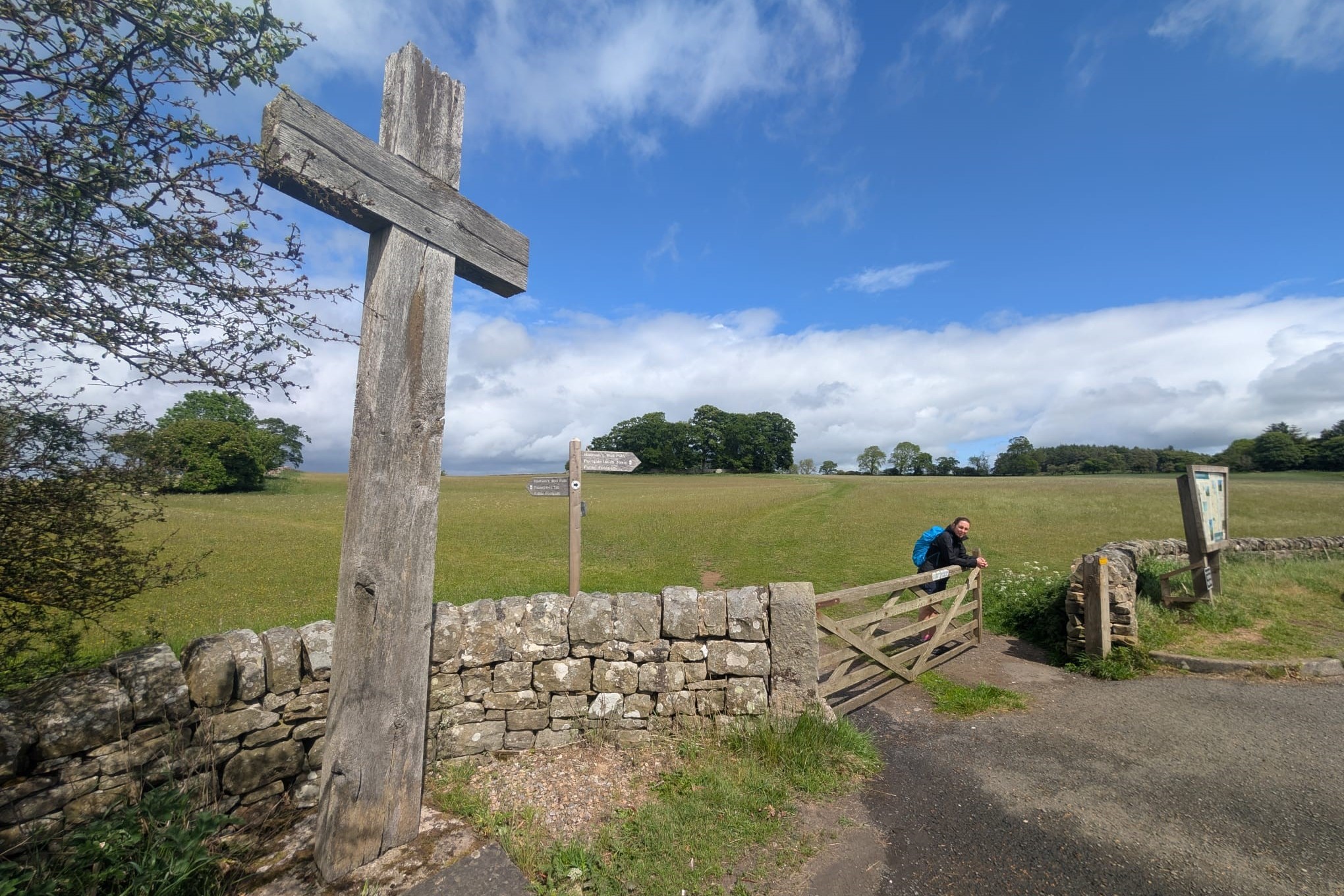
Knowing our accommodation was booked via Mickledore, and that our luggage would be efficiently moved along the route by our trusty luggage courier, Hadrian’s Haul, all we had to do was put one foot in front of the other to get from A to B for the next six days – bliss, I think you’ll agree.
One thing we did need to remember was to keep an eye out for the official Hadrian’s Wall stamps located along the route. We stamped our guidebook, but you can also buy a Hadrian’s Wall passport to stamp – a great souvenir to remember your trip.
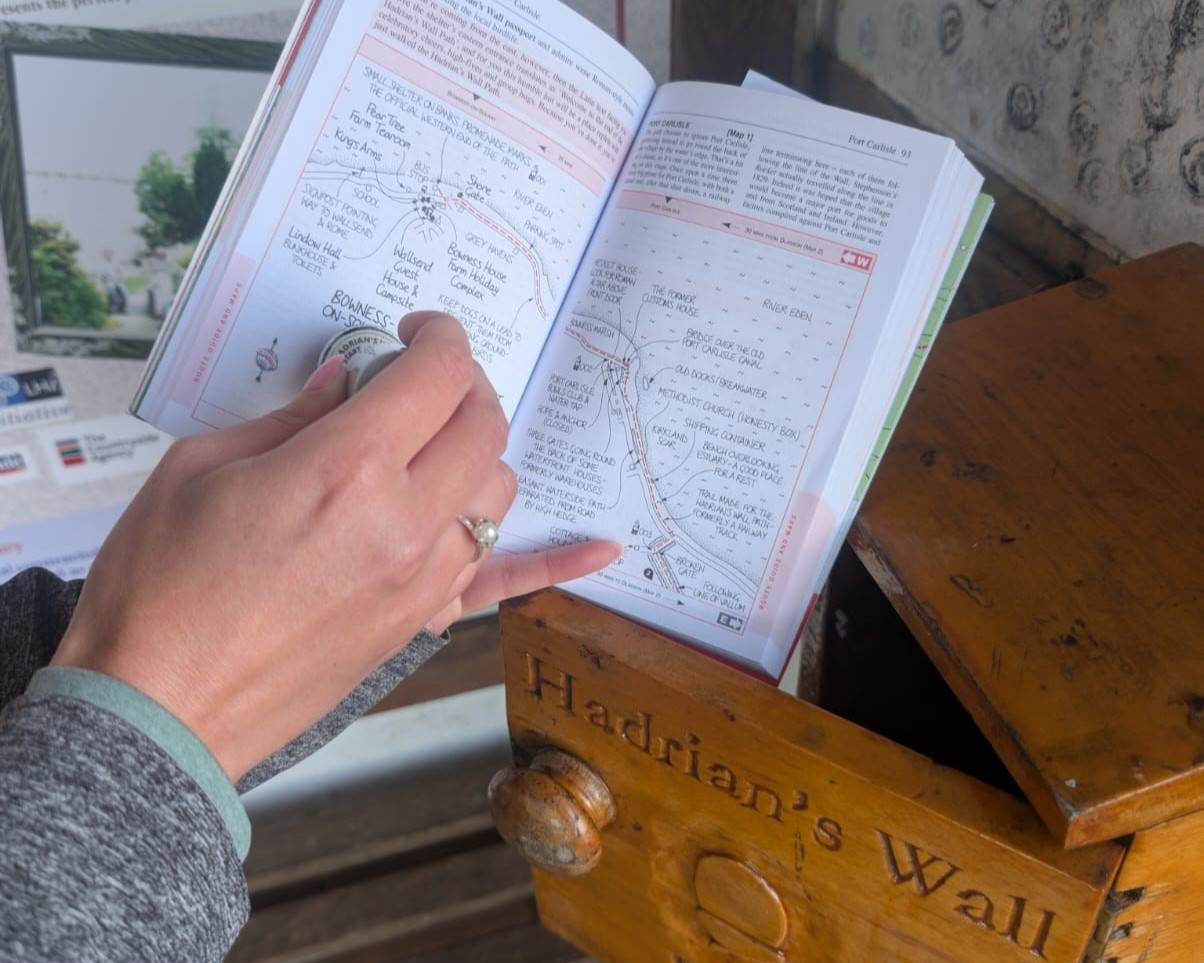
From Port Gate, we were expecting a blend of history and natural beauty, and we were not disappointed. Exploring old forts like Housesteads and Vindolanda felt like stepping back in history.
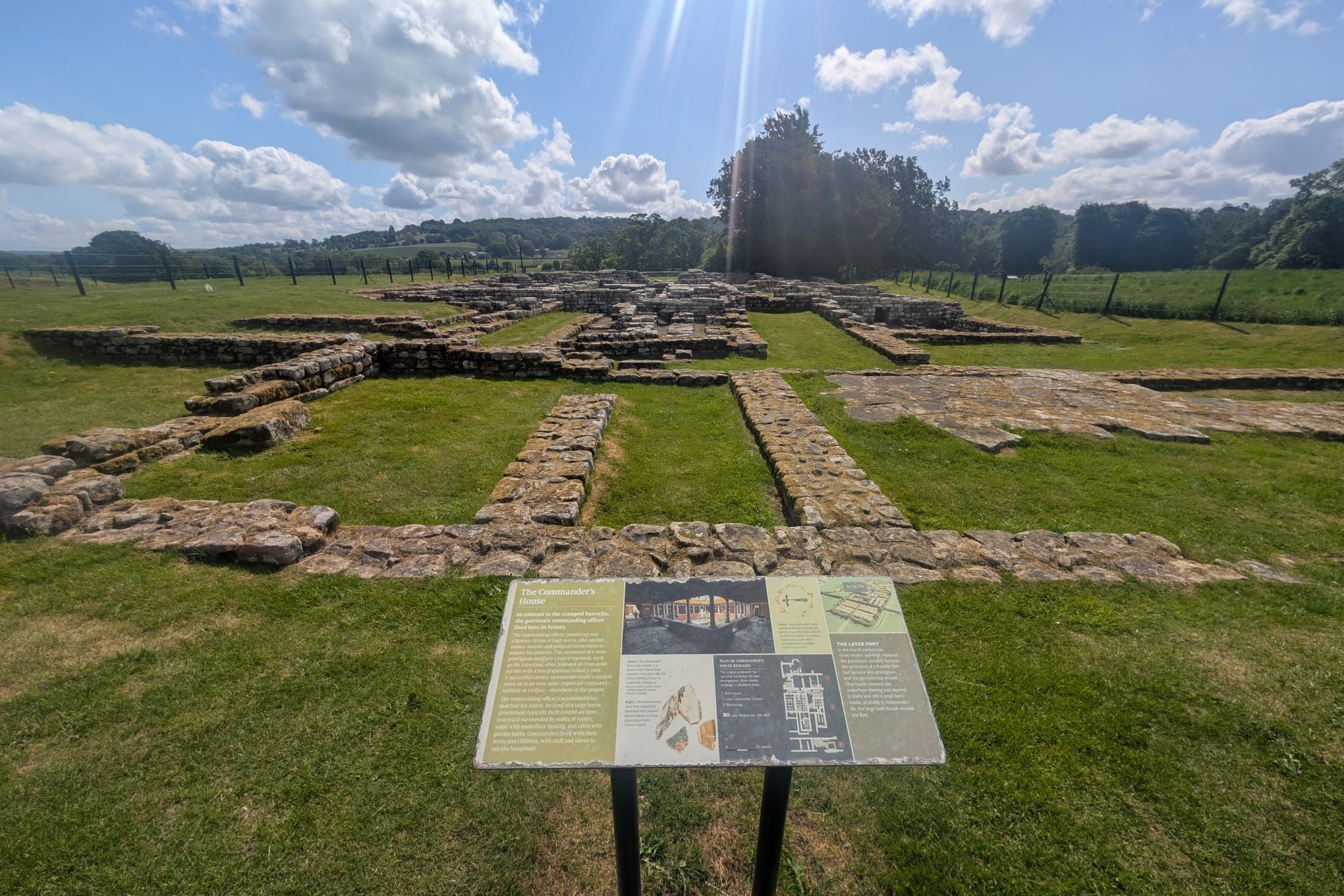
What we also found were well-marked and maintained paths, making the week even more enjoyable, knowing we could take in our surroundings without having our heads buried in our map and guidebook. The signposting is very comprehensive, and we never felt unsure or took any wrong turns. You could happily walk the route solo and be comforted both by the presence of other walkers and the confidence of knowing you are heading in the right direction.
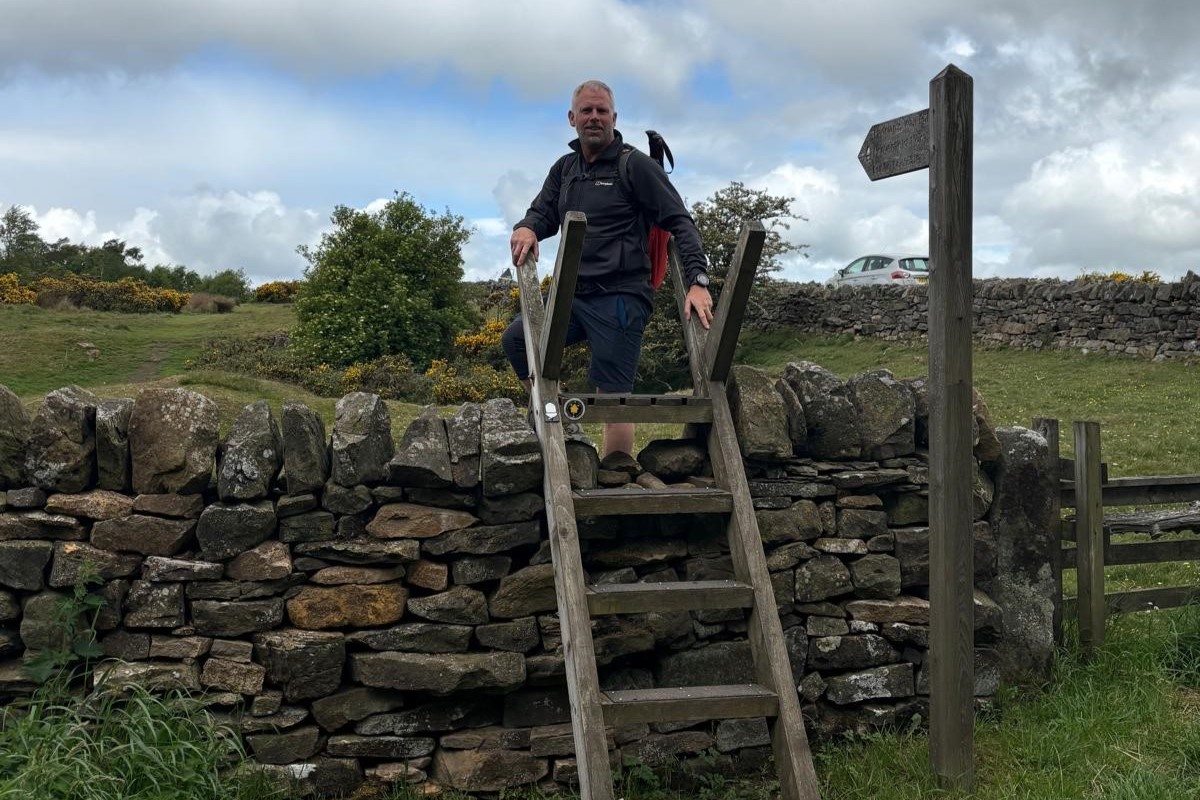
Boots laced up, tummies full with a hearty Northumberland breakfast, and packed lunch safely stowed in our rucksacks, we were ready to head off and start our six-day walking adventure.
We spent our first day passing through picturesque villages and marveling at the beautiful Northumberland countryside that surrounded us and stretched as far as the eye could see.
This is where things start to get interesting on the history side – you’ll begin spotting remnants of the wall itself, along with the old turrets and milecastles. For those unfamiliar with a milecastle, it is a small fortress built at intervals of one Roman mile along the wall. They served as checkpoints and guard posts, controlling access through the wall and providing accommodation for the soldiers.
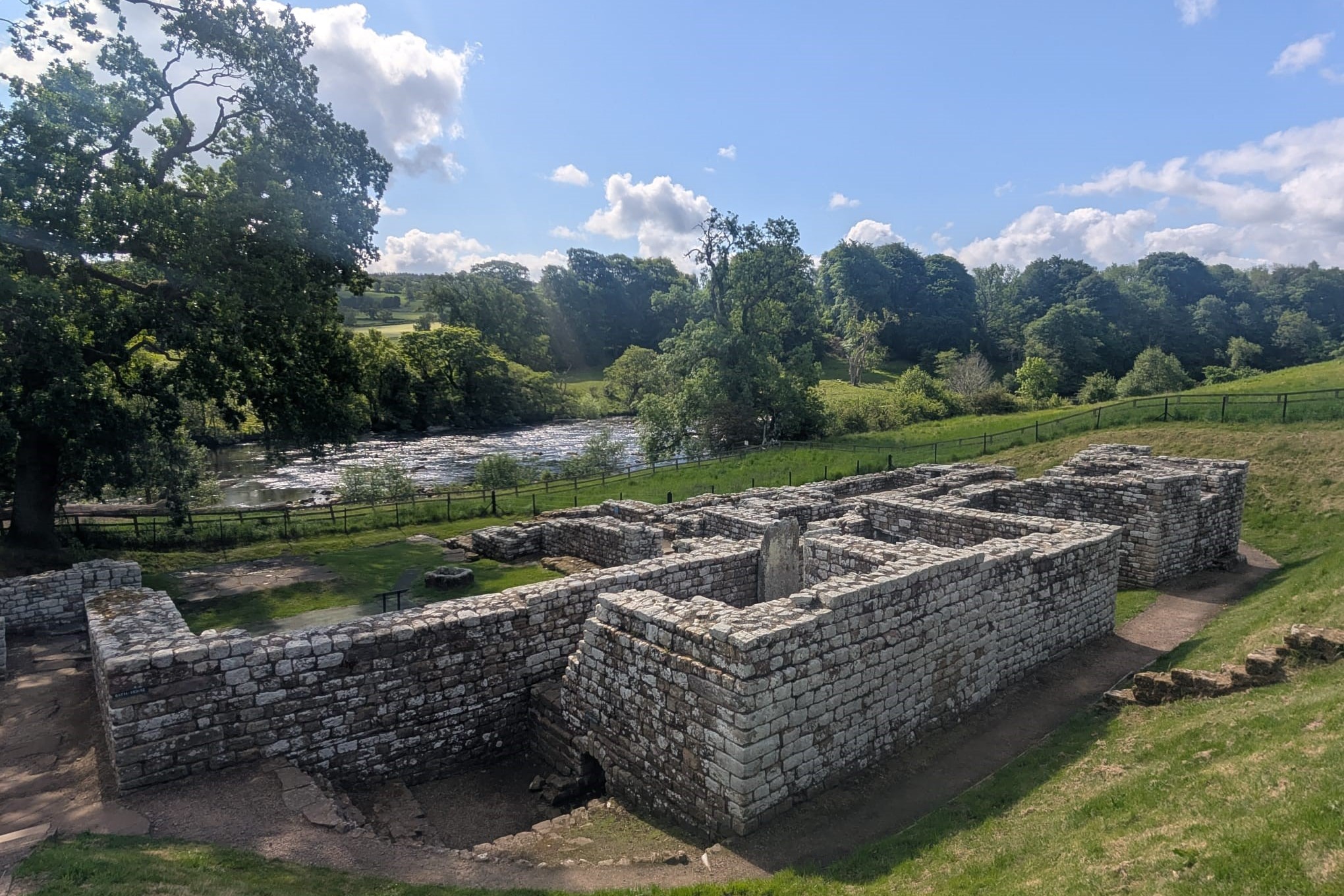
These milecastles really intrigued me, as they offer a fascinating insight into Roman military strategy, architecture, and daily life on the frontier. With around 81 milecastles along the route, it became a little game to see who could spot the next one first throughout the day.
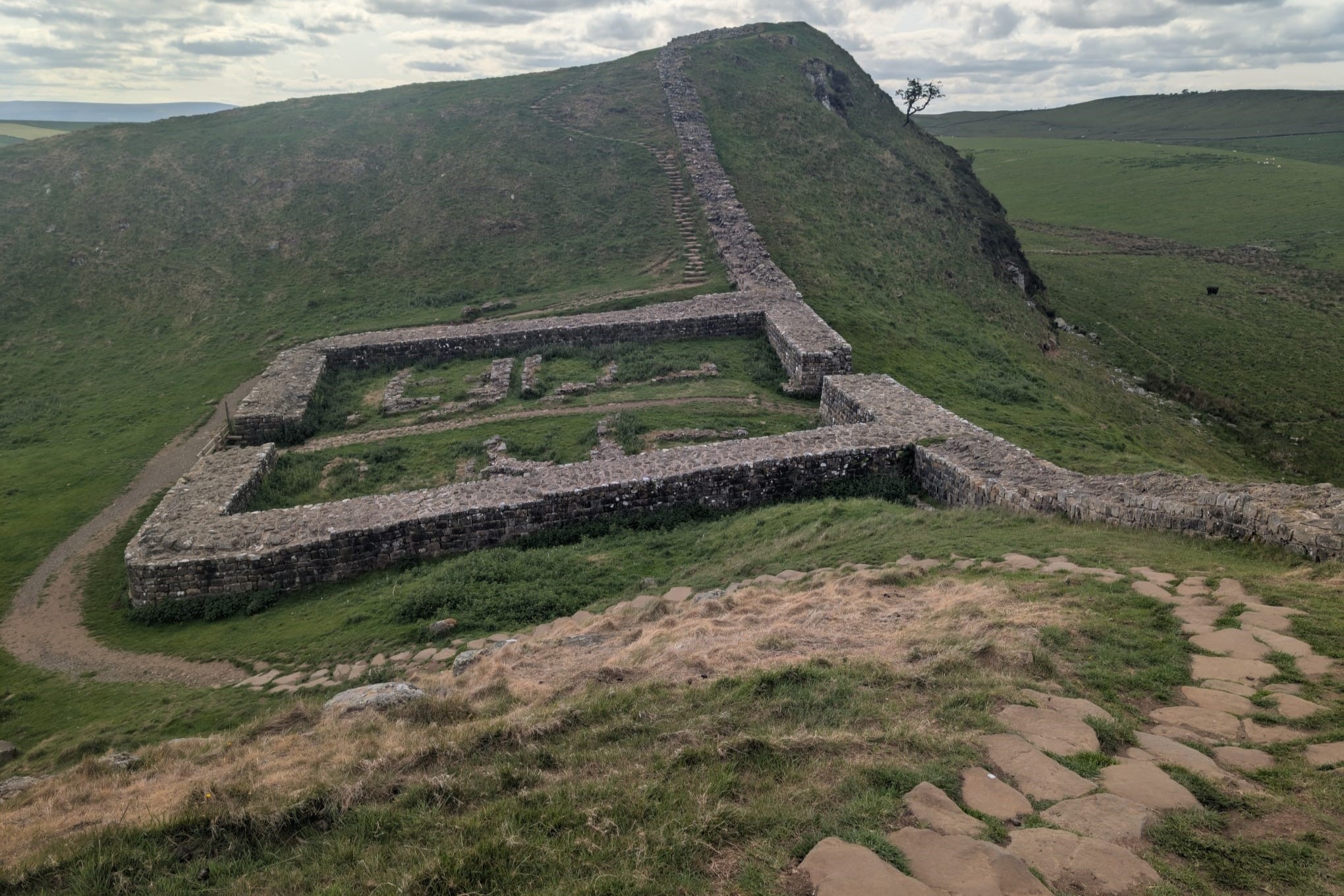
Day two was perhaps the day we were looking forward to the most. This is where you’ll find the most dramatic and elevated section of the trail – you could call it classic Roman Wall country. Spending most of the day steadily gaining height along the Whin Sill escarpment, we were spoilt with views across the moorland, South Tyne Valley, Pennines, and, of course, the Wall dotted along prominent ridges.
Nestled between the dramatic crags on this section, you’ll find Housesteads Roman Fort, one of the most well-preserved forts you’ll come across on your Hadrian’s Wall journey. A stop here is well worth it to soak up even more history.
After a long stretch of Hadrian’s Wall, there’s no better place to rest your weary feet than Twice Brewed. With its quintessential English pub accommodation, we powered on towards here with our minds on a well-earned reward: a pint of award-winning ale from their very own microbrewery. The thought of this certainly picked up our pace, and we were soon making a toast to another successful day.
A visit to their on-site planetarium is also a must. We enjoyed a special night here, watching the incredible Northumberland sky with the stargazing team – walking Hadrian’s Wall, sipping a home-brewed ale, and counting the same stars that Roman soldiers counted back in 122 AD – what more could you ask for?
Well, perhaps an extra night here? By adding a rest day to your trip, you’ll get even more chance to unwind in the shadow of history, sip a brew whilst soaking in the views, and let the stars remind you of your journey so far. And if you want to keep your feet moving, you are a stone’s throw away from Vindolanda – one of the most important military sites along the wall. You could easily spend the day here exploring and learning even more about the history of the wall, and you may even be lucky enough to witness one of the many archaeological digs that regularly take place here.
Onwards we must go; the rest of the route is calling, resuming our journey first to Gilsland, then Irthington, and finally the historic border city of Carlisle.
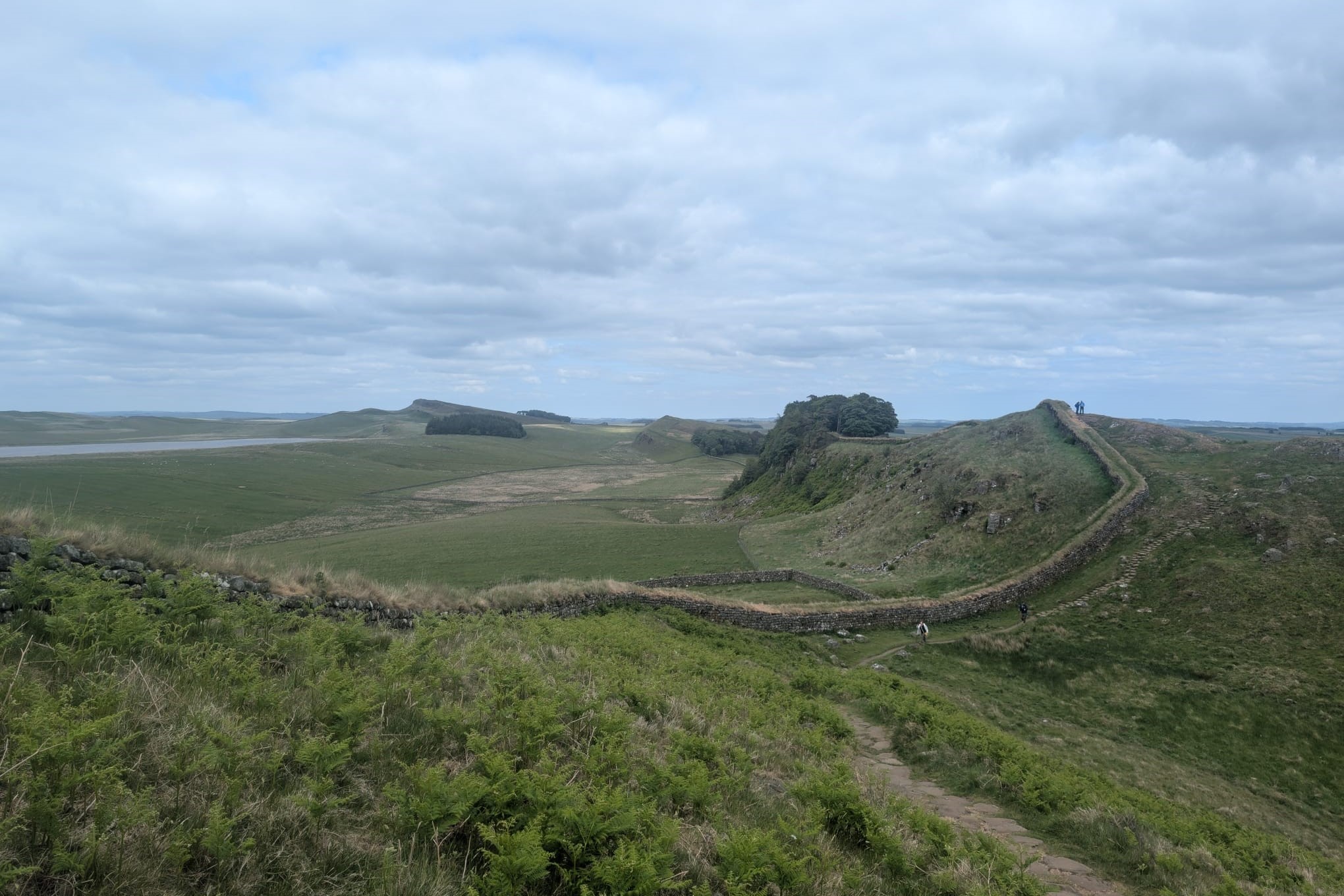
Continuing west, this section is rich in archaeological features, and you’ll find remnants of barracks, gates, granaries, and even a hospital – all with those same incredible views over the surrounding countryside. You really never get bored of the scenery!
Walking the route, often along high escarpments with far-reaching views, really helps you understand why Emperor Hadrian built the wall here in AD 122.
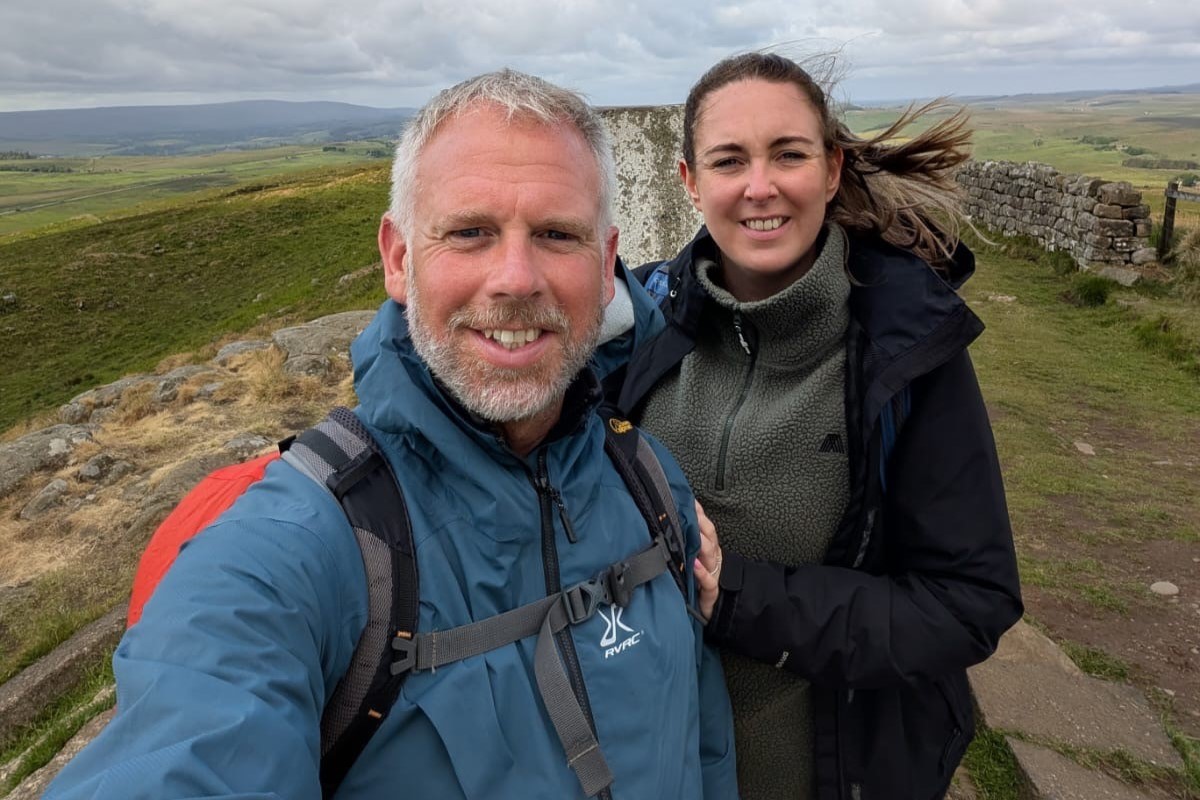
Winding through beautiful countryside and dipping into valleys, you’ll pass several sections where the wall stones are still neatly stacked, rising impressively above the trail.
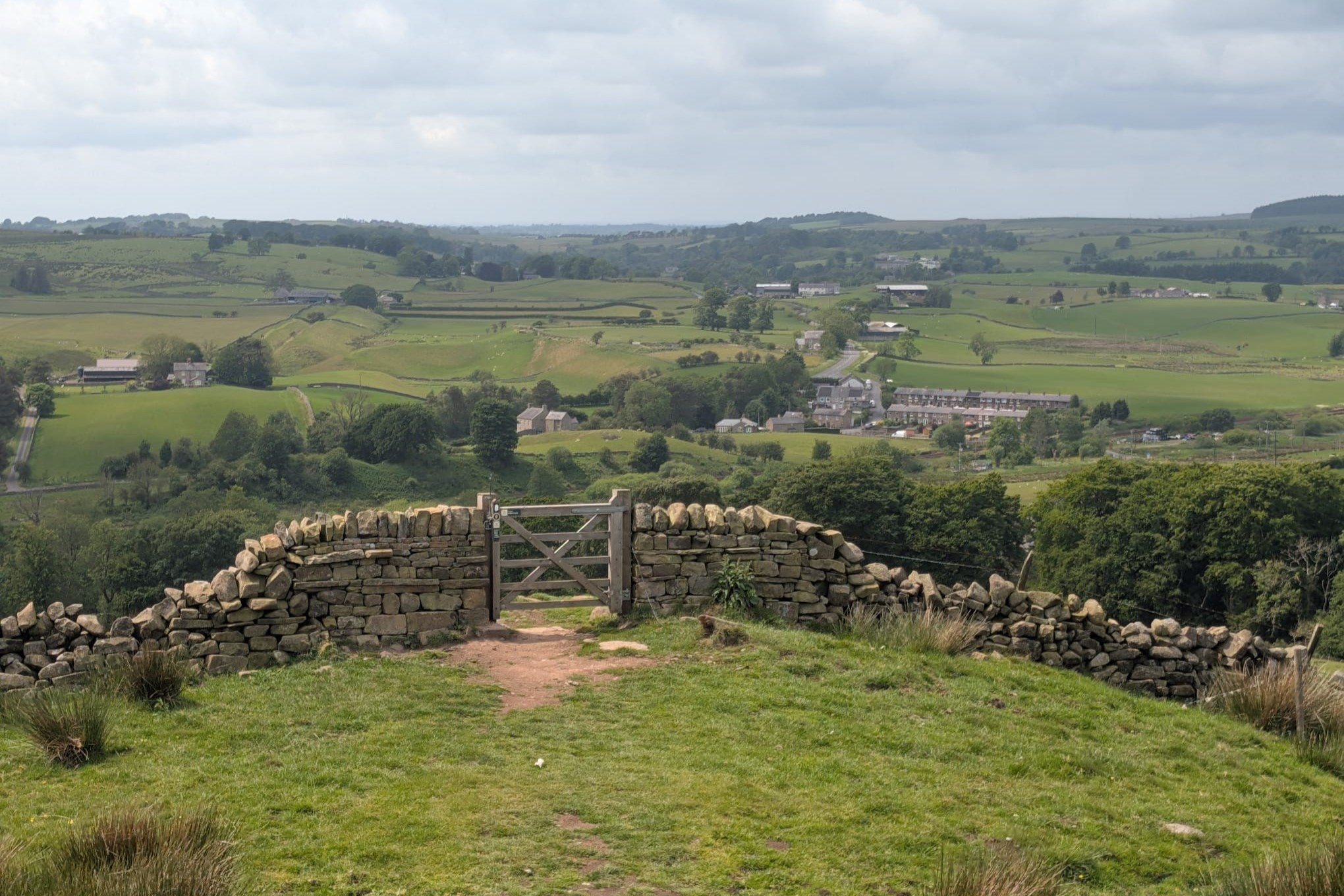
Towards the end of the route, as you near Carlisle – or should we say Luguvalium, as the Romans would – the scenery and terrain change once again, moving from rugged, untamed crags to gentler terrain and open fields. As with the start of the route in Wallsend, things become a little more urbanized. Although you are now walking along more modern roads and paths, one thing that doesn’t change is the milecastles and turrets, which can still be spotted nestled at regular intervals.
Walking into the city of Carlisle, you get a real sense of the living history of the wall. Built on the site of a former fort, Carlisle Castle stands proud and ready to greet you, signaling the end of one of the most rewarding parts of the entire route. It is worth taking some time at the castle to gain a deeper understanding of the Roman military presence that was once so prominent in the area.
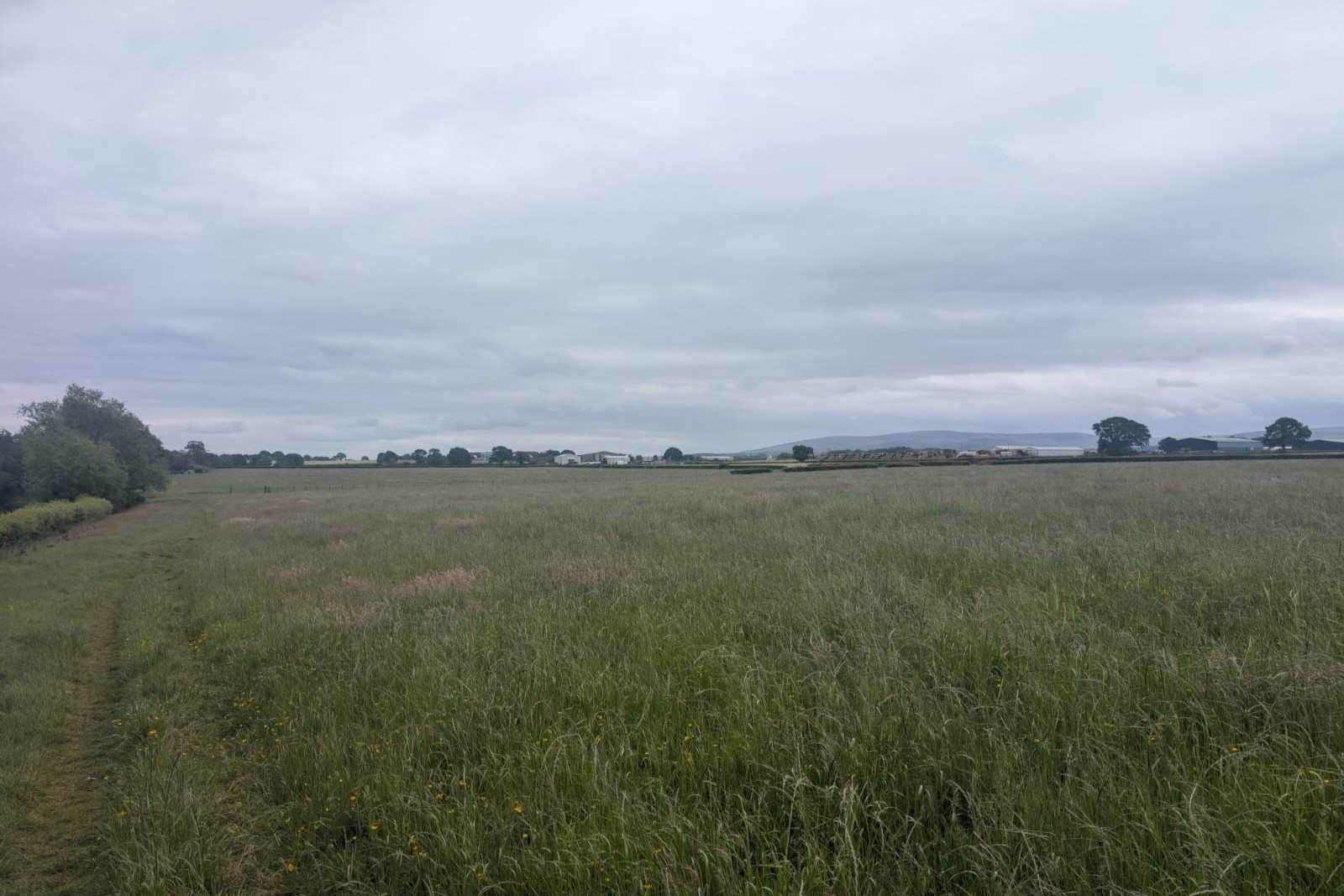
Our last day – always a day of mixed emotions, a sense of achievement tempered by the disappointment that our journey is almost over – is when we usually discuss where we want to walk next. I’ll be honest, it is mainly my partner Stephen who contributes to this conversation, as I’m usually nursing a blister or two, thinking about unlacing my boots, putting my feet up, and enjoying a cold glass of Sauvignon Blanc.
Leaving history-steeped Carlisle behind, we passed milecastle 74 – only seven more to go! We made another transition from urban environment to tranquil farmland and wetlands. Another flat section, and the more rugged terrain of previous days felt a world away. Although you don’t see any of the wall on this section, you get a real sense of what it must have been like for the Romans, overseeing one of the largest frontier zones in Britain, defending both land and sea.
Making our way along the Solway Marshes, we were kept company by the salt marsh cows that call these marshes home. Inquisitive and a little cheeky, they followed us for a while, as if offering moral support and encouragement toward our end destination of Bowness on Solway.
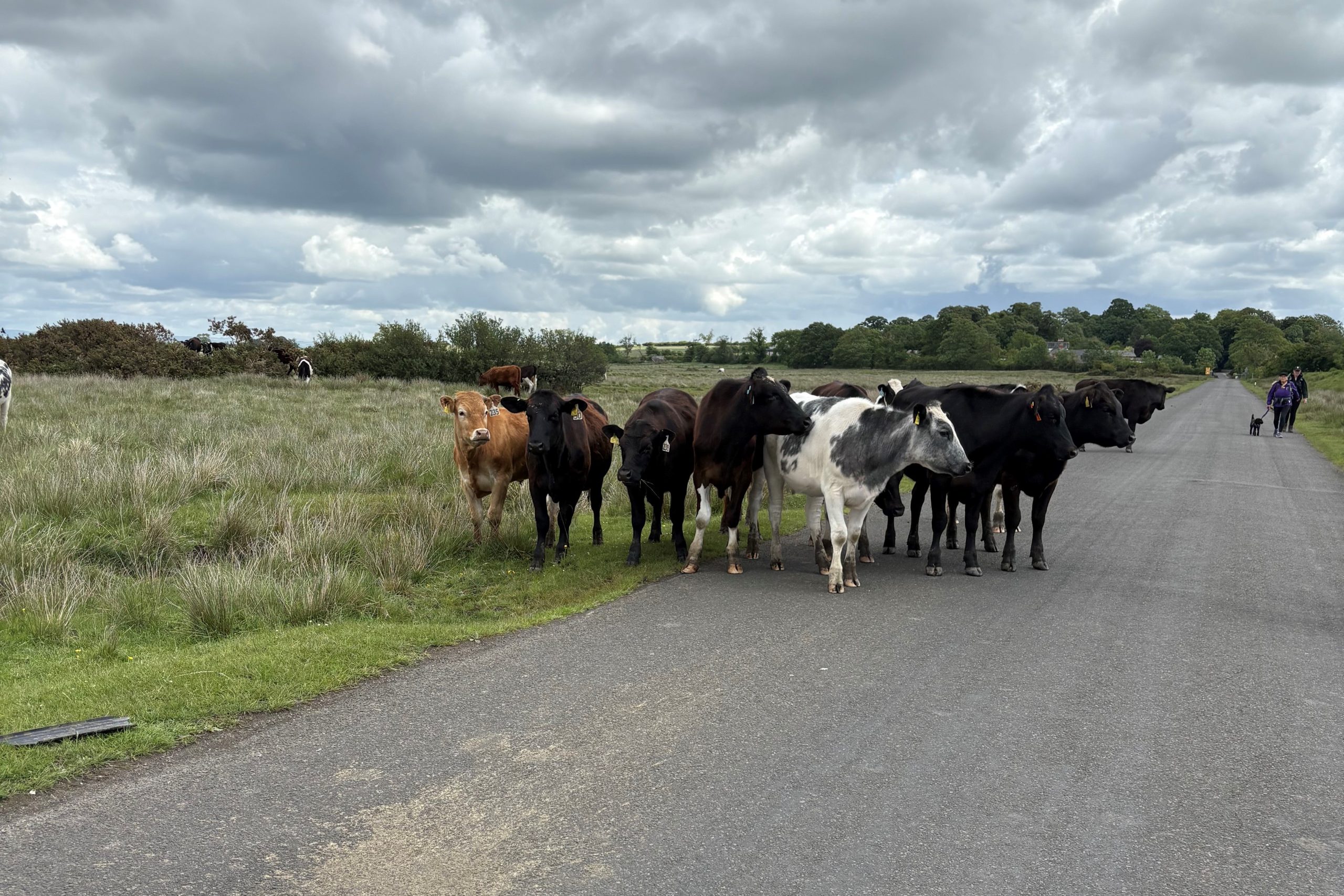
Bowness on Solway marks the western end of Hadrian’s Wall. Passing milecastle 81, the last milecastle of the route, gives you another glimpse into the infrastructure the Romans used to defend their empire. The wall has long been lost to the tide and salt marshes here, but you are rewarded with panoramic views of the Solway Firth and across the water to Scotland.
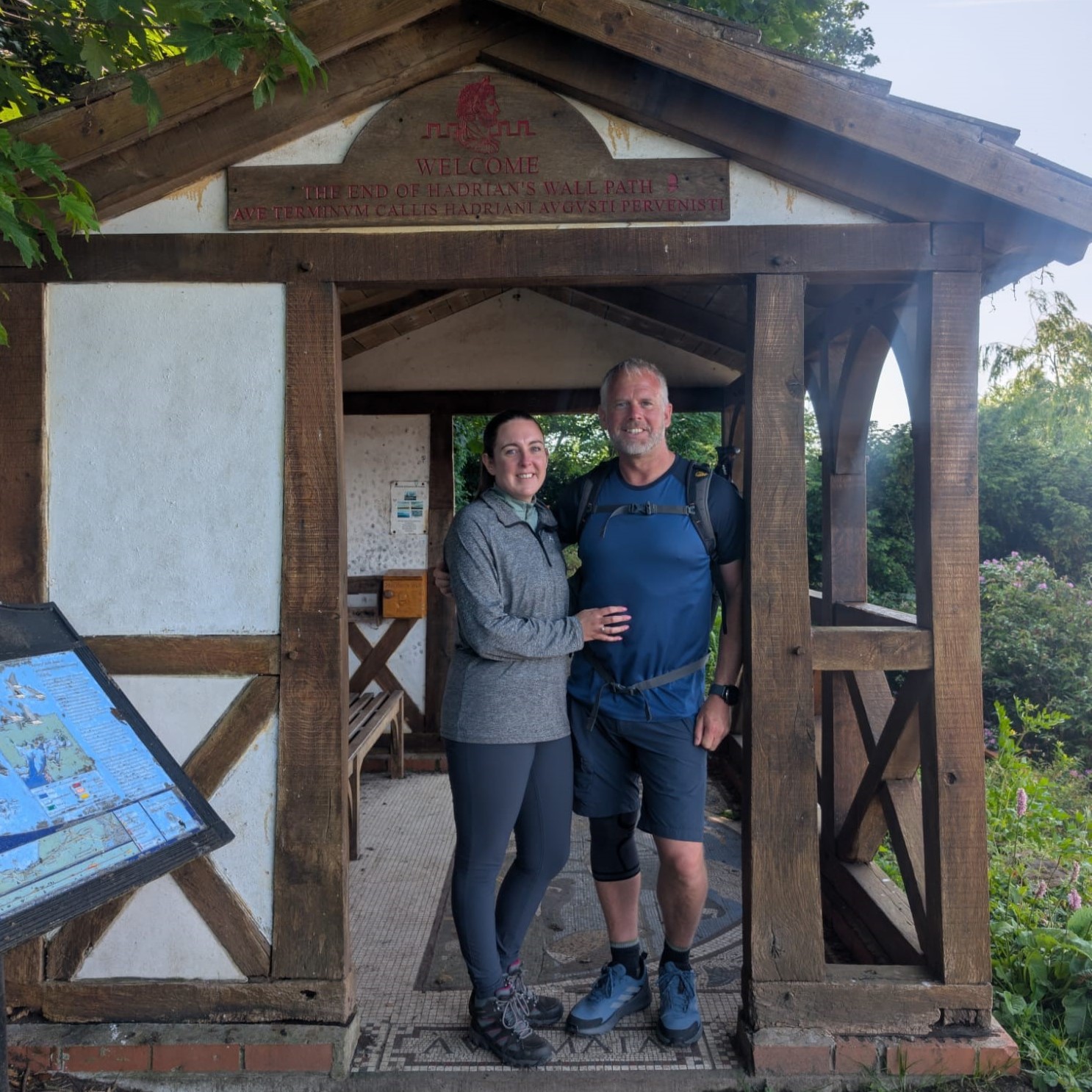
Walking the last mile or so into Bowness on Solway, you can feel the weight of history and appreciate the monumental task that Hadrian’s engineers and soldiers accomplished in building the wall over a six-year period. Our last day has been spent reflecting on the end of our 86-mile journey along Hadrian’s Wall – combining nature, history, and ancient remnants to create memories that will last a lifetime.
One interesting fact I learned along the route is that a Roman mile and our modern mile are not the same. A Roman mile, or “mile passuum” in Latin, was equivalent to 4,850 modern feet, or 0.919 miles. My feet were certainly calling, “We surrender, call a chariot!” by the end of the walk, but that’s the thing about long-distance walking – it’s addictive, and your blisters and tired feet are soon forgotten as you plan your next adventure.
If you’re into both hiking and history, this route is the perfect blend and certainly one I would recommend. You get to explore ancient ruins while walking through some of England’s most picturesque countryside.
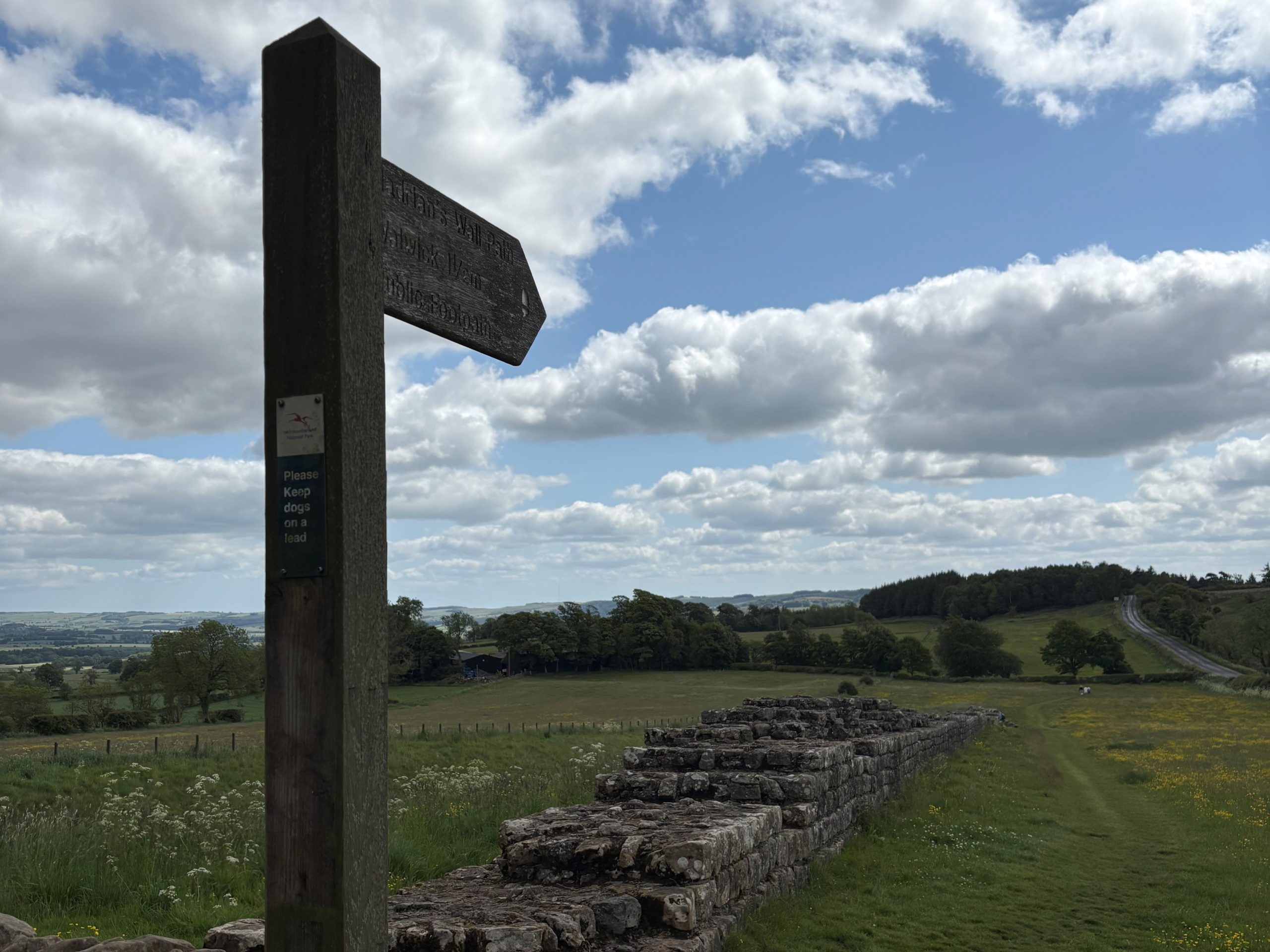
And the stubborn cow I mentioned?
Were they the ones on the Solway salt marshes, or is that what Stephen secretly calls me when I’m asking how many miles are left and having a little moan about my aching feet … who knows!
Inspired to walk Hadrian’s Wall Path?
Whether you want to trace the full length of this iconic frontier or explore it in shorter stages, we’d love to help you plan the perfect holiday. Email us at [email protected] or call 017687 72335 to speak to one of our walking holiday experts. We’ll take care of the arrangements leaving you free to enjoy mile after mile of beautiful countryside and Roman history.